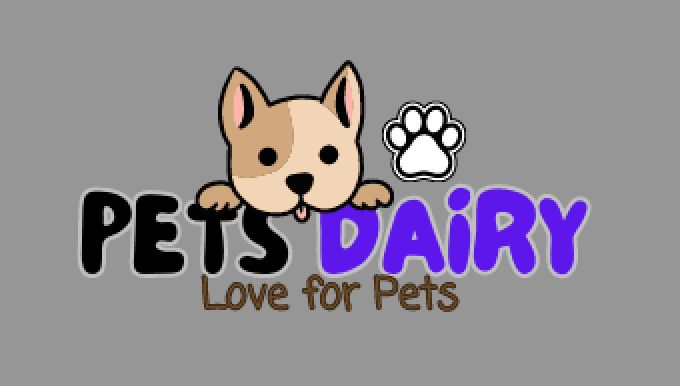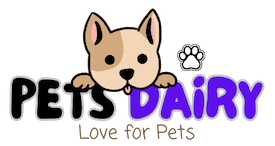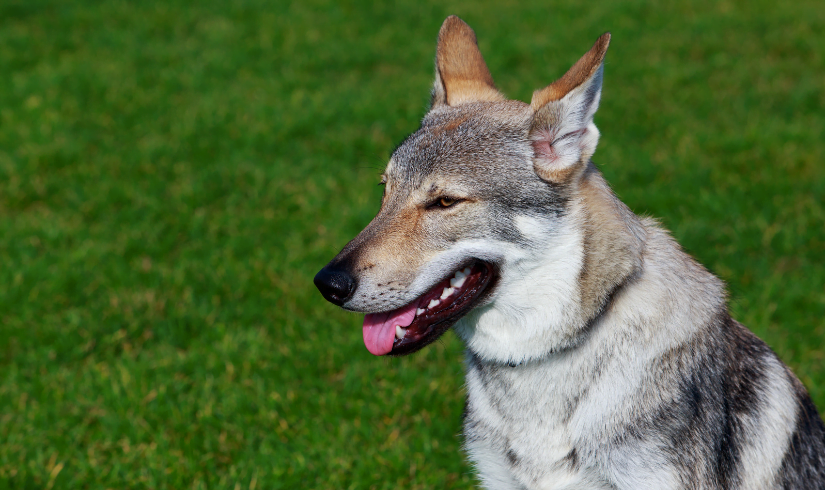Dogs
Australian Shepherd – Husky Mix: What You Need To Know About It
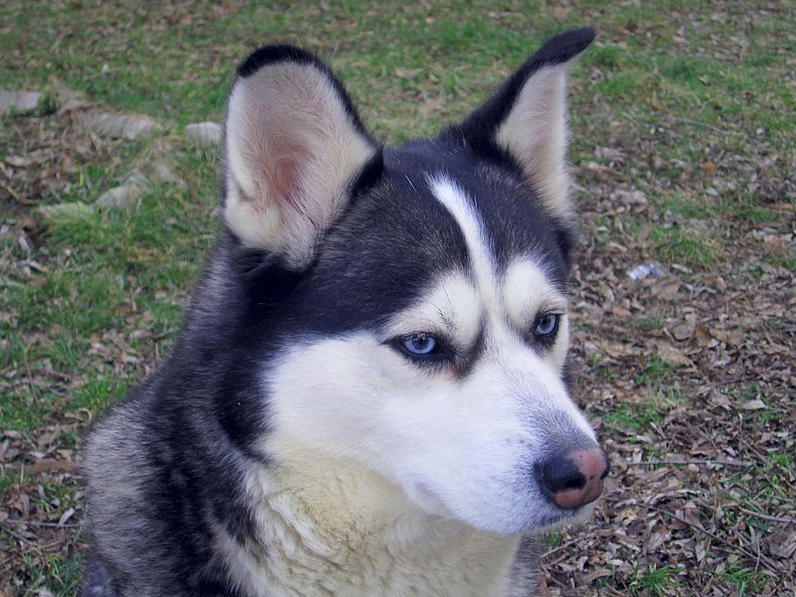
Australian Shepherd – Husky Mix: What You Need To Know About It
Combining the two working dog breeds, Siberian Huskies and Australian Shepherds create a new hybrid known as the Australian Shepherd Husky.
This hybrid puppy, often referred to as an Aussie Siberian or an Aussie Husky combines the fox-like characteristics of the Siberian Husky with the bravery of the Australian Shepherd.
This specific combination possesses a high level of intelligence in addition to a beautiful physique and attractive appearance.
Siberian Husky
The Siberian Husky breed originated in Siberia. His ancestors lived in Siberia and used him as sled dog to transport people and goods from one tribe to another.

He is a powerful and athletic dog that was designed to keep going and going to handle the harsh circumstances of the Arctic. Although he is not widely used for this purpose now, he still has limitless energy, making him really intense dog.
The Siberian Husky breed is one of the most high-energy dogs in canine society, and as such, it needs daily exercise that lasts for approximately ninety minutes.
According to a poll conducted by the American Kennel Club, the Siberian Husky has risen in popularity in recent years to the point where it is now the fourteenth most popular dog breed in the United States (AKC).
He is characterized as being lovable, naughty, and extroverted, and he has the potential to become an amazing pet for an energetic family that could spend most of their time with him.
Siberian Huskies are known for their kind demeanor, making them excellent breeding candidates. The Huskydoodle and the Goberian Retriever are two additional, prominent hybrid dog breeds.
As a medium-sized dog, he stands between 20 and 23, is 12 inches tall, and weighs between 35 and 60 pounds. His body length is between 20 and 23 12 inches.
Because of his coat’s thickness and fluffiness, he remains extremely warm, and his family and home remain extremely furry.
Australia Shepherd
The Australian Shepherd is a dog that is just as lovable as the Husky, and the AKC has it listed just three spots lower than the Husky in terms of breed popularity.

His height can range between 18 and 23 inches, and his weight can be between 40 and 65 pounds. He is considered a medium-sized dog.
The purpose of his breed was to herd the cowboy’s cattle. Hence he is said to be intelligent, work-oriented, and joyful. Rest assured that this breed is filled to the brim with a vibrant energy that will need to be channeled in some way.
Even while he might not require employment, he will, without a doubt, require at least one hour every day of strenuous physical activity.
When he initially meets a new person, he maintains a certain degree of reserve, but as he gets to know someone, he may be nice without being unduly so.
His mane has a very unusual appearance due to the many different colored spots and patches scattered throughout it.
Because of their gentle temperament, mixes of the Australian Shepherd are quickly gaining popularity. The Aussie Pom, sometimes known as the Augie, is another common breed combination.
Aussie Siberian
It is believed that the Australian Husky was first bred in 2004, and perhaps he was bred to be a family companion known for his striking and playful appearance and colors.
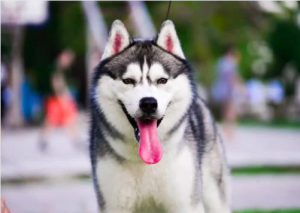
The Aussie Siberian is a relatively new designer dog, and while his exact origins are unknown, it is believed that he was first bred in 2004.
Temperament Of Aussie Siberian
The most noticeable aspect of the temperament of an Australian Husky is that he is full of life and energy.
However, because his Australian parents have a more laid-back demeanor at home, the Australian Husky may not be as intense as a Husky, making him more suitable for a wider variety of families.
This indicates that he will be equipped with an “off-button,” which his Husky parent does not have. There will never be a dull time when the Australian Husky is in the picture.
You can be sure that he will incorporate the characteristics of dogs loved the most into his unique manner, whether that involves lots of games during the day or lots of hugs at night.
Even while he is willing to give you some hugs or let you scratch his belly a couple of times, he is not overly loving, and the fact that he is independent is a quality that many people admire in others.
It is possible, but not guaranteed that he will inherit the chatty trait of the Husky father. While this trait is tremendously amusing, it can be challenging to train out of a dog, especially if you prefer a quiet canine companion.
If you dwell in an area that has noise limitations, this is something that you should think about. Although he probably won’t be unduly protective of his family, he may try to keep outsiders from entering the house until they’re safe.
He may be cold and distant with new people at first. Once his owner has introduced him to the guests, he will attempt to start many games independently.
Colors And Coats
You can rest assured that he will have a double coat that gives off the impression of being thick and fluffy and a substantial undercoat that will keep him warm.
Certainly, he will shed significantly throughout the year, and if you are not a doggy hair fan, you should consider getting a breed completely different from this one.
However, his coat can have a variety of colors and patterns, which means that he could inherit the spotted colors of the Australian Shepherd, the markings of the Husky, or even a combination of the two. His coat is not uniform in color or pattern.
Reasons To Avoid An Aussie Siberian
- It has a strong sense of self-reliance. It can try to escape the house and explore the surrounding neighborhood. It is also capable of becoming stubborn.
- It is a robust shedding tool. If you or members of your family suffer from allergies to dog fur, it is recommended that you look into alternative mixed breeds of dogs. Because of this quality, there would be an increased requirement for grooming operations.
- It calls for endeavors of a significant level. Both persons who are constantly on the move and those who are content to remain sedentary may find this inconvenient. This quality does not provide a drawback for all owners, notably not for those who lead active lifestyles. When it is not stimulated and bored, this mixture can become unruly and more devious.
Reasons To Get An Aussie Siberian
- This dog has a high level of intelligence and is simple to instruct. Both of its parent breeds are intelligent and diligent breeds. This characteristic will be passed down to the offspring in the end. Your animal companion will be excited to pick up new skills.
- It presents an intimidating and arresting appearance. This hybrid will have a face resembling a fox and an unusual blend of eye colors.
- It has the potential to be a very good watchdog. It has an inbuilt loyalty for its owners, but when it comes to strangers, it acts very differently than it does with its owners. It has a natural tendency to be suspicious of unfamiliar people. Its devotion to its master and its wariness of strangers makes it an exceptional watchdog.
The Appearance And Personality Of An Aussie Siberian
Puppies resulting from the cross between an Australian Shepherd and a Husky weigh between 35 and 65 pounds.
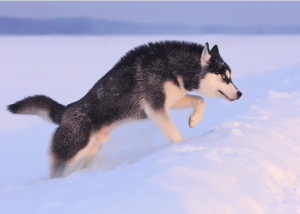
The height of a dog of this hybridization ranges from 20 to 23 inches, which classifies them as a medium-sized breed. This hybrid will have a thick coat that is approximately medium in length.
It features a double layer of coating, both resistant to the elements. It is important to consider both the environment in which the Australian Shepherd Husky will live and the sort of coat it will have.
There is a possibility that the coat will be a mix of hues, including brown, black, silver, and gray. One color predominates from the chest to the belly, whereas the other color predominates everywhere else on the body.
The offspring of the Australian Shepherd and the Husky inherit intelligent traits. Because of this attribute, they can make up lost ground and gain abilities at a rate significantly higher than the norm.
If given the proper training, these canines have the potential to become service dogs, rescue dogs, and therapy dogs.
The canines that mix Husky and Australian Shepherd have a fierce resolve and excellent guardian qualities. They can keep responsibly watching your home.
They have a habit of keeping a distance from unfamiliar people. Sometimes, it yearns to be among others and demonstrate the affectionate side of its personality.
You can handle these situations by beginning socialization at an early age and engaging in good training. In general, this mixed-breed dog makes for a nice friend for the family.
An Aussie Siberian For Purchase.
If you are interested in purchasing a Husky crossed with an Australian Shepherd, you will need to do a lot of research.
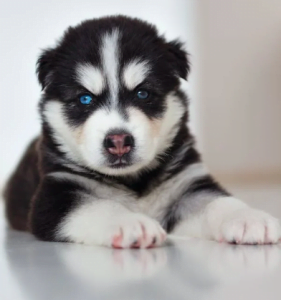
This exercise will assist you in determining which breeders are reliable and meet the requirements. These individuals create a welcoming atmosphere necessary for healthy growth and development.
They eliminate any possibility of inbreeding to reduce the risk of any potential health problems. Breeders who can be relied upon will give you a copy of the health records of both the parent dogs and the offspring that they produce.
The purpose of this section of the article is to assist you in identifying possible breeders. It is strongly discouraged by the American Society for the Prevention of Cruelty toward Animals (ASPCA), which is why I urge you to avoid purchasing puppies over the Internet.
Additionally, it is essential to make personal contact with the prospective breeders. This will allow you to determine whether or not the breeders are providing adequate care for the parent dogs and the puppies they produce.
The cost of a dog that is a hybrid of an Australian Shepherd and a Husky goes anywhere from $500 to $1,000 on average.
The following is a list of potential sources and reputable breeders for the parent breeds of the dogs that are created by crossing an Australian Shepherd with a Husky:
- Loyal Siberian Huskies in Hamer, South Carolina
- Australian Shepherd Puppies with AKC Champion Bloodline in Hammond, LA
- The Australian Shepherd breed puppies are available at Oakhurst in Barnesville, Maryland.
- The Australian Shepherd by “Catori” is located in Galt, California.
- Aruff Siberian Huskies in Akeley, MN
- Bama Huskies Kennel located in the northern part of Alabama.
It is not something I recommend doing because most pet retailers obtain their supply of animals from a location that does not provide ideal living conditions for the animals.
You may save money and help the community by adopting a pet from a local shelter rather than purchasing or buying one from a pet store. Please get in touch with some rescue organizations.
An Aussie Siberian Grooming
In addition to preserving the dog’s outward appearance, the grooming procedure confers several other advantages.
Grooming a dog has many advantages, including reducing problems such as flea and tick infestations, establishing a strong link between the dog and its owners, moisturizing the dog’s coat, and the maintenance of the dog’s clean appearance.
The best way to groom a dog of this mixed breed is to give it a good brushing. The Australian Shepherd Huskies are well known for their excessive amounts of shedding.
When it comes to detangling mats and knots in the fur, you have the option of using a slicker. It can glide through the dense layers of the double coat, making it much easier to groom the animal.
Brushing a dog’s coat that is a mix of a Husky and an Australian Shepherd should be done anywhere from three to five times each week. You should begin brushing the coat only after ensuring that all coat sections are exposed.
If the dog’s neck is not visible, you will need to remove the collar from the animal. You have the option of using a slicker brush that is equipped with lengthy pins.
It is able to penetrate the deeper layers of the dog’s coat and exert sufficient pressure to provide the impression of a massage. Depending on the specifics of the grooming, the process can be very enjoyable for the dogs or extremely distressing for them.
The sensation of the grooming items rubbing against their skin might be distressing for some dogs. Desensitization training is a non-invasive method that can be used to assist the dog.
To get this process started, you can brush the dog’s coat with your hands and then observe how the animal responds to the touch. You may need to wait a few days or weeks before you can begin combing your hair with a metal comb or slicker brush.
Grooming a dog also includes cutting the dog’s fur to a desired length. It is important to note that you will move the thinning shears where the hair grows to achieve the desired results.
When it’s required, you should bathe this dog. When the dog is visibly dirty or has an offensive odor, it is vital to do so. Oatmeal and aloe vera are two examples of hair products with a neutral pH, and I recommend using them.
The use of these products will result in an enhanced attractiveness of the dog’s coat.
Additionally, the dog’s eyes, ears, nails, nose, and paws should all be trimmed and manicured as part of the grooming process. Cotton swabs are not appropriate for use in puppy ears under any circumstances.
To clean out the eyes and remove any debris, you can use either a cotton ball soaked in mineral oil or a microfiber cloth soaked in mineral oil.
When it comes to washing the ears of the Husky and Australian Shepherd mix puppy, you will need another clean cotton ball and a specially formulated cleanser to be safe for canines.
If you have a lot of things going on in your life, including work or school, you might find it more convenient to take your dog to a reliable groomer and make an appointment for him to get groomed.
Health Issues In An Aussie Siberian
The lifespan of a Husky that has been crossed with an Australian Shepherd is projected to be between 12 and 14 years.
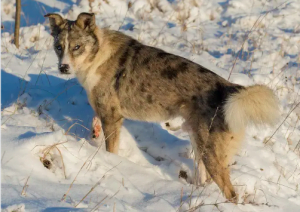
Environmental and genetic factors can potentially have a favorable or negative impact on the health of the crossbreed over its long-term lifespan.
In general, Siberian Huskies are a breed that is more predisposed to developing health problems than the Australian Shepherd. It is incumbent upon a responsible owner to keep this in mind and keep an eye out for any prospective manifestations.
The following list is some of the known health concerns that can affect a hybrid dog that is a combination of an Australian Shepherd and a Siberian Husky:
Hip dysplasia
Hip dysplasia is a condition that manifests itself in younger dogs as well as older dogs due to a genetic predisposition. This health issue is more common in older dogs. The dog may experience excruciating pain due to the inflammation in their joints.
Heat stroke
Due to this breed’s thick double coat, they are better able to withstand cold than hot weather. They are more likely to suffer from heat stroke as a result.
Epilepsy
Epilepsy is a condition that affects the nervous system and is characterized by recurrent seizures. Idiopathic or structural reasons could be to blame for this issue.
Progressive Retinal Atrophy
The dog’s vision may deteriorate due to this ailment, which is medically referred to as progressive retinal atrophy. It is characterized by a gradual loss of photoreceptor cells in the retina at the back of the eye.
The job of these cells is to transform the energy from light into electric impulses. Their deterioration indicates that this could eventually result in blindness.
Cataract
A cataract is a medical term that describes a problem that affects the eye’s lens. This results in the crystalline structure having a cloudy appearance.
You should vaccinate the puppy as soon as possible and at the appropriate intervals. This type of disease prevention is essential in the fight against infectious diseases such as adenovirus, parvovirus, hepatitis, parainfluenza, measles, and rabies.
You will be able to acquire the findings of the DNA testing performed on the dog and its parents with the help of transparent breeders. You should talk to a veterinarian to assist your dog in reaching its best possible health.
Nutritional Needs Of An Aussie Siberian
To ensure that the dog is in the best possible health, it is essential to provide it with a well-balanced diet with all of the necessary nutrients.
A healthy diet will supply the fuel necessary for their daily activity, particularly for the high-energy activities in which this dog participates.
The recommended amount of food for an adult dog that mixes an Australian Shepherd and a Husky might range from 1 1/2 cups to 3 cups of good quality kibbles.
It is essential to be aware that the rate of a dog’s metabolism, as well as its weight, level of activity, and age, all have a role in determining the quantity of food they consume. Break up the dry food into two separate meals each day.
The addition of certain important minerals to the food of the dog is beneficial to the animal’s overall development and functioning. Phosphorus and calcium are necessary to forestall bone fractures and the formation of immature bone.
These elements are also beneficial for the development of muscles and the treatment of blood problems. Magnesium is an additional mineral that is both beneficial and needed. This contributes to the growth of both bones and muscles.
Every dog should have healthy gums and teeth that have been thoroughly cleaned.
You should make it a routine to check on your dog’s weight regularly. Dogs that are too overweight have an increased risk of developing structural abnormalities.
You will note that the dog is heavier, tires easily when it does activity, and has excess body fat, which is evident. The risk of developing this illness significantly increases with advancing age. Problems with hormones could be the root cause.
You should have a conversation with a reputable veterinarian and make appointments with them to guarantee that your dog is in the best possible health.
Thanks to these check-ups, you will better understand the current problems and any potential threats to the dog’s health. The veterinarian can establish if the dog’s body weight and proportions are significantly off from what is considered healthy.
There is no monetary value that can be placed on the well-being of your pet. Remove the worst dry dog food from your pet’s diet and replace it with one of the many more nutritious options available.
Check for Wellness Core Dog Food, Dog For Dog Food, or Nutra Thrive Dog Food Supplement since they offer a far more well-rounded assortment of nutritional components.
You can select the ideal option for your active and curious new puppy by looking through the various brands of the best food available for puppies.
Try looking for something suitable for older dogs with gray coats in the finest senior dry dog food. They are not Pugs, but they might enjoy the flavor of the best dry dog food products designed for Pugs.
These dogs have one-of-a-kind personalities and preferences thanks to the many genes they inherited from their parents.
Check out the best dry dog food for large breeds or the best dry dog food for tiny breeds to see if there is anything on those lists that matches your pet’s preferences. Make sure you ask your veterinarian before making any dietary adjustments to your four-legged pet.
Exercise Need Of An Aussie Siberian
The Husky Australian Shepherd mix dogs have a daily requirement for strenuous exercises that last for an extended period.
At the very least, one and a half hours can be spent participating in these activities. Stimulation is appropriate and sufficient for the Husky-Australian Shepherd mix dog is required to attract the dog’s attention.
Jogging, fetching, and trekking are some of the activities this hybrid enjoys most in the great outdoors. This hybrid has powerful jaws and can chew through tough bones.
To prevent the dog from being bored, you can keep it busy by giving it something to chew on. Chewing is an important part of dental hygiene since it helps clean teeth and gums.
This canine would take a shine to the Leaps & Bounds Romp and Run Spiny Bone Dog Toy. It is constructed of strong material and comes in various colors.
The Husky-Australian Shepherd mix canines require a large backyard completely fenced in. Because of its strong sense of independence, the dog tends to wander off and become lost in the neighborhood.
You might decide that, while the puppy is still young, it is best to keep it inside the house for exercise, where you will have a greater chance of keeping an eye on it.
The Animaze Adjustable Exercise Black Pen for Dogs is a product that can be purchased. It is possible to modify it according to the activities planned for the day. Additionally, it is simple to put together.
Training The An Aussie Siberian
The offspring of an Australian Shepherd and a Husky has an excellent chance of becoming working dogs with abilities including search and rescue and therapy.

Training it to reach its finest conduct and acquire the most skills will be required. In addition to providing sufficient mental and physical stimulation, it is important to begin obedience training.
When engaging with your dogs, it is essential to be strong and helpful at the same time. The following are some training suggestions for dogs that are a combination of Husky and Australian Shepherd:
Leash training
Training your dog to walk properly while on a leash will prevent him from running ahead of you during walks. The ‘no-pull’ dog harness is an alternative that might be taken into consideration.
It contains a device that applies light pressure on the side of the dog that is pulling in the opposite direction to redirect the dog’s attention back to the owner.
Do not hit Your dog
You should never hit your dog since doing so will damage your relationship with the animal. You risk the dog attacking you if it perceives you as a threat. It may develop antisocial personality features.
Training with chew toys
Some dogs tend to chew on whatever is nearby. This may result in damage to property as well as health issues. One strategy to halt this behavior is to replace the other item with a nice chew toy and present it to the dog.
It is essential only to perform this action if you have successfully caught the dog in the act of chewing.
Utilize its young age
Utilize its youthful years to your advantage, as puppies have the shortest learning curve of all ages of dogs. When training pups, you need to be reasonable and consistent in your approach.
You can engage a professional dog trainer if you require additional information and assistance in putting the training methods into practice.
An Aussie Siberian With Family Members
Dogs that mix Australian Shepherds and Husky are known for their warmth and devotion to their owners. They also take pleasure in socializing with people’s other dogs and pets.
They may require the same quantity of energy as the other pets. You can begin early socialization training with this dog as early as 2 and a half weeks old to improve the dynamic within your family.
The dog will mature into a brave and confident adult as a result of going through this procedure. The dog will have no problem interacting socially with humans and other canines.
This will also boost the dog’s capabilities, making it more suitable for work as a herder or service dog.
You have a responsibility as an adult to maintain a watchful check on the interactions between the dog and the child. It is essential to instill in the children the value of refraining from causing the dog any unnecessary stress while eating or sleeping.
You should keep an eye on the dimensions of the other animals you keep as pets. This hybrid could feel threatened when confronted by breeds that are significantly larger than it is.
When caring for dogs who combine Husky and Australian Shepherd, you need to make room for playful interactions and bonding time with the dogs. You will need to balance the amount of time you spend being disciplined and having fun.
Questions People Also Ask: (FAQs)
Would a Siberian Husky be a suitable pet for a family?
Siberian Huskies can make good family dogs, but they are not the best choice for everyone. They are a high-energy breed that requires a lot of exercise and mental stimulation.
They also have a strong independent streak and can be stubborn at times. They may not be the best choice for families with small children or for first-time dog owners. However, with proper training and socialization, they can make loving and loyal pets.
It’s important to do research and understand the specific needs and characteristics of the breed before bringing one into your home.
Is The Siberian Husky A Dog That Has A Lot Of Brains?
Because Siberian Huskies are bright dogs, they must exercise their minds daily to remain happy and healthy.
Various activities may be used to provide your Siberian husky with the necessary cerebral stimulation, such as nose work games, interactive puzzles, playing hide and seek with them, and teaching them new tricks.
Can Huskies Be Aggressive?
The Siberian Husky is a very intelligent, affectionate, and loyal dog breed. Most of the time, Huskies aren’t the most aggressive dogs.
All dogs, however, have the potential to exhibit aggressive tendencies, and owners should take immediate action to correct these behaviors at the first sign that the dog is trying to prove dominance, is becoming territorial, or is tracking prey.
Do Huskies Provide Their Owners With Protection?
Huskies are extremely protective of their owners due to the nature of the breed itself. It will be up to you to emphasize that you are a part of his domain that must be protected. You will also need to train Ice to obey your directions to get him to respond properly so that he can protect you.
Do Huskies Like Humans?
These dogs were specifically developed to run; thus, their passion for the sport might sometimes precede their attachment to their owners.
It’s common for Siberian huskies to get along well with people of all ages, even kids. Most Siberian huskies get along well with other canines, particularly those they are raised with.
What Breeds Of Dogs Combine To Create A Husky?
Siberian Huskies could be traced back to a lineage older than 9,500 years and share genetic similarities with historical East Siberian dogs and ancient Lake Baikal dogs. Siberian Huskies also exhibit a genetic affinity with canines who lived in Lake Baikal.
Is It Challenging To Housebreak Huskies?
Huskies are not simple to train, which might be challenging for people who have never owned a dog before. The breed’s history explains why this is the case: Huskies were originally bred to pull sleds across vast distances while harnessed.
The breed was never intended to have a close working relationship with its owner. They were not bred for speed or agility but for stamina and strength.
What Gives Huskies Their Distinctive Blue Eyes?
According to Irizarry’s research, the mutation of the ALX4 gene that occurs in Siberian huskies appears to lead to a reduction in the generation of a pigment in the eye. The absence of pigment contributes to the eye’s bluish appearance. “There is no blue pigment.
We appreciate you for taking the time to read this article!
Finally, we hope you found this article interesting? And what do you think about ”Australian Shepherd – Husky Mix: What You Need To Know About It!?”
Please you should feel free to share or inform your friends about this article and this site, thanks!
And let us know if you observe something that isn’t quite right.
Dogs
How to Remove Dog Urine Stains: The Ultimate Guide to Pet Stain Removal
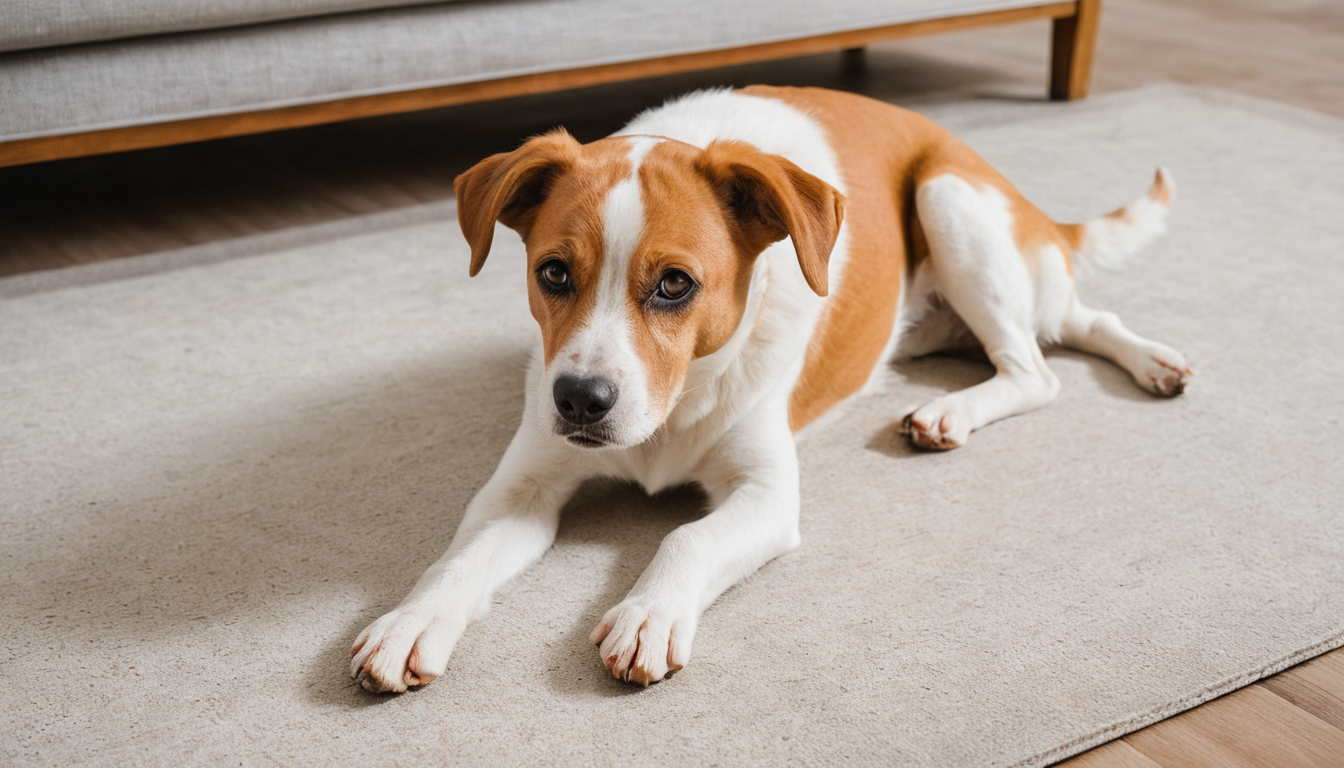
As any dog owner knows, accidents happen. Whether it’s a puppy still learning to potty train or an older dog with incontinence issues, dog urine stains can be a common problem in households with pets. Not only are dog pee stains unsightly, but they also carry strong odors that can linger long after the stain has dried. Fortunately, with the right knowledge and cleaning products, you can effectively remove dog urine stains and keep your home clean and fresh.
In this ultimate guide to dog pee stain removal, we’ll walk you through various methods for removing dog urine stains from different surfaces, along with tips for preventing future accidents. Whether you’re dealing with carpets, upholstery, or hardwood floors, we’ve got you covered.
1. Act Quickly: Why Timing Matters
The sooner you address a dog urine stain, the easier it will be to remove. Urine is acidic and can penetrate deep into fabrics or carpets, which can make the stain more difficult to remove if left for too long. For fresh pet stains, blot up as much liquid as possible with a clean towel or paper towels. Avoid rubbing the stain, as this can spread the urine and push it deeper into the fibers. If the stain is older, you may need to use a more powerful cleaning solution to break down the urine.
2. Use the Right Cleaning Solution
To effectively remove dog urine stains, you need the right cleaning solution. Regular household cleaners may not be enough to neutralize the odor or break down the stain, especially with stubborn dog pee stains. You’ll want a solution that not only cleans but also deodorizes.
DIY Solutions for Removing Dog Urine Stains:
- Vinegar and Baking Soda: One of the most popular DIY remedies involves a mixture of white vinegar and water. Mix one part white vinegar with one part water and pour the solution over the stained area. Let it sit for 5-10 minutes before blotting it up. Once dry, sprinkle baking soda over the area to help neutralize any lingering odors. The combination of vinegar and baking soda works well to lift the stain and tackle odors.
- Dish Soap and Hydrogen Peroxide: For tougher stains, you can create a powerful solution by mixing one tablespoon of dish soap with two cups of warm water and one tablespoon of hydrogen peroxide. Apply the solution to the stain and let it sit for about 10-15 minutes. Then, blot it up with a clean cloth. This mixture is especially effective for older stains.
Commercial Cleaners:
If you prefer a store-bought solution, there are many enzymatic cleaners specifically designed to remove dog urine stains. Enzymatic cleaners contain natural enzymes that break down the proteins in the urine, which is key to fully removing both the stain and the odor. Look for a cleaner that is safe for pets and suitable for your type of flooring or upholstery.
To use, spray the enzymatic cleaner generously over the stain, making sure to cover the entire affected area. Allow it to sit for the amount of time specified on the product label—usually about 10-15 minutes—and then blot up any excess liquid. Follow the instructions carefully to get the best results.
3. Target Different Surfaces
Dog urine stains can occur on various surfaces in your home, and each requires a slightly different treatment.
Carpets and Rugs:
Carpets are the most common victims of dog urine stains. Because carpet fibers are highly absorbent, it’s important to act quickly to avoid the urine soaking in deep. After blotting up as much liquid as possible, apply your cleaning solution and let it sit for the recommended time. Once the stain is removed, rinse the area with clean water and blot it dry. You may want to vacuum the area once it’s fully dry to restore the texture of the carpet.
For tough or older stains, consider using a steam cleaner with an appropriate cleaning solution designed for pet stains. Steam cleaning can penetrate deeper into the carpet fibers and help remove lingering odors.
Upholstery:
If your dog has had an accident on the couch or a chair, you can use the same vinegar-water solution or an enzymatic cleaner to treat the stain. Be sure to test any cleaning solution on an inconspicuous area of the fabric first to ensure it doesn’t cause discoloration or damage. When cleaning upholstery, use a minimal amount of liquid to avoid soaking the fabric. Gently blot the stain with a cloth, and allow the upholstery to air dry.
Hardwood Floors:
While dog urine can damage hardwood floors if left untreated, it’s easier to clean than carpets. First, wipe up as much liquid as possible using a dry cloth. Then, apply a mild vinegar-water solution (1 part vinegar to 3 parts water) to the stain. Wipe it up quickly and dry the area to prevent moisture from seeping into the wood. For more stubborn stains, consider using a specialized floor cleaner designed for pet stains.
Tile and Stone Floors:
Tile floors are relatively easy to clean, but urine can seep into the grout and leave a lingering odor. Use a mild soap-and-water solution to scrub the area, and for grout, you may need a grout cleaner or a mixture of baking soda and water to lift the stain. Be sure to dry the area thoroughly to prevent water damage.
4. Neutralize Odors
Even after you’ve successfully removed the stain, the odor may still linger. To completely neutralize odors, try sprinkling baking soda over the cleaned area and let it sit for several hours (or overnight). Baking soda is excellent at absorbing odors and can leave your home smelling fresh.
Alternatively, if you’re using an enzymatic cleaner, it should also help neutralize the odor as it breaks down the urine proteins.
5. Prevent Future Accidents
While cleaning up after dog urine stains is essential, prevention is always better. Here are a few tips to minimize future accidents:
- Regular Bathroom Breaks: If your dog is still in the potty training phase, be sure to take them out frequently. For adult dogs, regular walks and bathroom breaks are essential to prevent accidents indoors.
- Health Check: Sometimes, increased urination or accidents indoors can be a sign of a health issue. If your dog suddenly starts urinating indoors or seems to have trouble holding it, consult your vet.
- Protective Mats: Consider placing washable mats or furniture covers in areas where your dog spends the most time. These can help protect your floors and furniture from future accidents.
Conclusion
Removing dog urine stains and pet stains doesn’t have to be a difficult or stressful task. With the right cleaning solutions and techniques, you can successfully remove dog urine stains from carpets, upholstery, and hard surfaces. The key is to act quickly, use the right products, and follow the proper cleaning methods for each type of surface.
By keeping your home clean and odor-free, you’ll ensure a comfortable environment for both you and your furry companion.
Dogs
The Touching Story Behind Why a Dog Lays on a Particular Spot in the Yard

The Touching Story Behind Why a Dog Lays on a Particular Spot in the Yard: A Tale of Unbreakable Loyalty
Dogs are known for their incredible loyalty, but sometimes their devotion to those they love can manifest in heart-wrenching ways. This is the case with one dog whose habit of laying on a specific spot in the yard has left many people in tears. What may appear to be a simple, everyday action carries with it a deeper, heartbreaking reason that has moved dog lovers and pet owners alike.
In this article, we will delve into the emotional backstory of why this dog chooses that special spot and what it reveals about the profound bond between pets and their owners.
The Unbreakable Bond Between Humans and Dogs
Dogs have long been known as “man’s best friend.” Their unwavering loyalty and companionship can turn them into integral parts of our families. They sense our emotions, offer comfort in times of need, and provide joy and laughter. The bond between humans and dogs is unique, and for many, their pet becomes more than just an animal — they are family.
Why Do Dogs Form Such Strong Attachments?
One of the reasons dogs are so loyal is due to their pack mentality. In the wild, dogs live and hunt in packs, forming tight-knit social groups. When domesticated, they transfer this pack behavior to their human families. Dogs will go to great lengths to remain close to those they consider part of their pack, and when a member is lost, the dog often mourns deeply.
@talltaz The whole yard and he only lays on top of where we buried her 🥺😭 #petloss #grief #fyp
The Story of the Loyal Dog and the Special Spot in the Yard
In one particular case, a dog’s loyalty is demonstrated in an incredibly poignant way. After the passing of the dog’s owner, the pet began to exhibit unusual behavior — lying down on the same spot in the yard every single day. At first, the family thought it was just a comfortable place for the dog to rest, but they soon realized that the spot held a special significance.
The Meaning Behind the Spot
The spot where the dog lays is the same place where the owner used to spend time with the dog, sitting outside together, enjoying the fresh air and the sunshine. After the owner passed away, the dog returned to that spot daily, as if waiting for the person to return. The dog’s actions have been described as a form of mourning, a way of staying close to their beloved human even after they’ve gone.
How Pets Grieve the Loss of Their Owners
Just like humans, dogs can experience grief when they lose someone they love. The signs of grief in dogs can include changes in behavior, loss of appetite, and separation anxiety. In some cases, dogs may return to places that remind them of their owner, like the loyal dog who lays on that specific spot in the yard.
Signs of Grieving in Dogs
- Loss of Appetite: One of the most common signs of a grieving dog is a refusal to eat or a noticeable decrease in appetite.
- Withdrawal: A grieving dog may become less active or less interested in playing, choosing instead to lay in one place for long periods.
- Whining or Howling: Some dogs will vocalize their sadness through whines or howls, particularly when they are in a place that reminds them of their owner.
- Searching: It’s not uncommon for dogs to search the house or yard for their lost companion, wandering around or sniffing in places where their owner used to be.
The Science Behind Dogs and Grief
Research into canine behavior has shown that dogs are capable of feeling complex emotions, including grief. A study by the American Society for the Prevention of Cruelty to Animals (ASPCA) revealed that more than 60% of dogs exhibited signs of grief after the loss of a companion pet, and it’s reasonable to believe that they would react similarly after losing a human companion. The dog’s brain processes emotions in much the same way as the human brain, and they often form deep emotional bonds that are difficult to break.
How Dogs Cope With Loss
Dogs, much like humans, cope with loss in different ways. While some may exhibit signs of sadness or distress, others might become more clingy or protective of their remaining family members. Providing them with comfort, attention, and familiar routines can help them cope with their feelings of loss.
Helping a Grieving Dog
If your dog is showing signs of grief, it’s essential to provide them with support and understanding. They may need extra care and attention during this difficult time. Here are a few ways to help a grieving dog:
- Stick to a Routine: Keeping a regular routine can provide a sense of stability and security for your pet.
- Give Them Extra Attention: Spending more time with your dog, offering affection and comfort, can help ease their sadness.
- Offer Comforting Items: Items that smell like the deceased owner, such as clothing or bedding, may help the dog feel close to their lost companion.
A Dog’s Loyalty Knows No Bounds
The story of the dog lying on that specific spot in the yard is just one of many examples of how deeply dogs feel their connections to humans. It highlights the incredible loyalty that dogs have for their owners, even after death. Dogs don’t just offer companionship while we are alive; they continue to show their love and dedication long after we’re gone.
Other Heartwarming Stories of Canine Loyalty
This isn’t the only story of a dog displaying remarkable loyalty. There are countless stories of dogs who wait for their owners, return to places they once shared, or exhibit behaviors that suggest they are mourning the loss of their loved ones. One of the most famous examples is the story of Hachiko, the Japanese Akita who waited at a train station every day for nearly ten years after his owner’s death. Such stories remind us of the deep emotional lives of our pets and the bonds they form with us.
Conclusion
The heartbreaking story of the dog laying on a specific spot in the yard is a testament to the unbreakable bond between humans and their pets. It’s a reminder that dogs are not just pets; they are loyal, loving companions who feel loss and grief just as deeply as we do. For this particular dog, that spot in the yard is more than just a place to rest; it’s a symbol of the inseparable bond they shared with their owner.
Frequently Asked Questions (FAQs)
Why does my dog lay in a specific spot every day?
Dogs often return to places that have sentimental value, either due to memories they associate with the spot or because it reminds them of their owners. In some cases, a dog may lay in a particular spot because it feels safe or comforting.
Can dogs really feel grief after losing an owner?
Yes, dogs are capable of feeling grief. They can show signs of sadness, withdrawal, loss of appetite, and even changes in behavior when they lose a companion, whether it’s another pet or a human.
How can I help my grieving dog cope with the loss of a family member?
You can help your grieving dog by providing extra attention, maintaining a consistent routine, and offering comforting items like their owner’s clothing or bedding. It’s important to give them time to adjust and to provide emotional support.
How long does it take for a dog to overcome grief?
The grieving process can vary from dog to dog. While some dogs may recover within a few weeks, others may take months to adjust. It’s essential to be patient and offer them the love and care they need during this time.
Are there any other signs that a dog is grieving?
Aside from loss of appetite and withdrawal, a grieving dog may become more vocal, clingy, or exhibit behaviors like searching the house for their lost companion. Each dog grieves differently, so it’s crucial to observe their behavior and provide comfort when needed.
We appreciate you for taking the time to read this article!
Finally, we hope you found this article interesting? And what do you think about ”The Touching Story Behind Why a Dog Lays on a Particular Spot in the Yard!?”
Please feel free to share or inform your friends about this article and this site, thanks!
And let us know if you observe something that isn’t quite right.
References: Heartbreaking Reason Dog Lays on Specific Spot in Yard
Dogs
How Do Dogs Know Their Rescuers and Adopters?

How Do Dogs Know Their Rescuers and Adopters?
Dogs are often considered man’s best friend, and for good reason. Their loyalty, empathy, and innate ability to form deep connections with humans are truly remarkable. But one question that has intrigued pet lovers and researchers alike is: How do dogs recognize their rescuers and adopters?
This seemingly simple question opens up a world of complex emotional and cognitive processes that dogs undergo when they meet someone who will become an important part of their lives.
In this comprehensive exploration, we will delve into the science and emotion behind a dog’s ability to recognize and bond with their rescuers and adopters. From the impact of scent and body language to the neurological responses in a dog’s brain, we will uncover the many layers that contribute to this profound connection.
The Bond Between Humans and Dogs
A Relationship Rooted in History
The relationship between humans and dogs dates back thousands of years. Originally, dogs were domesticated from wolves, and through selective breeding, they evolved into the varied breeds we know today. This long history has led to a deep bond between the two species, with dogs becoming attuned to human emotions, behaviors, and cues.
Understanding the Human-Dog Connection
Dogs have evolved to become incredibly perceptive to human emotions. This connection is so strong that dogs can often sense when their owners are happy, sad, or anxious. This ability is due in part to the oxytocin hormone, often referred to as the “love hormone.” Both dogs and humans release oxytocin when they interact positively, strengthening their bond.
How Dogs Recognize Their Rescuers
The Role of Scent in Recognition
Dogs have an extraordinary sense of smell—up to 100,000 times more sensitive than that of humans. This acute olfactory ability allows them to pick up on a wide range of scents, including those associated with specific people. When a dog is rescued, the first thing they often do is sniff their rescuer. This initial interaction helps the dog form a scent-based memory of the person who saved them.
The Importance of Body Language
In addition to scent, dogs rely heavily on body language to interpret human intentions. A rescuer’s calm demeanor, gentle movements, and soft voice can reassure a frightened dog and help them form a positive association. Dogs are incredibly intuitive and can quickly pick up on the non-verbal cues that indicate whether a person is a friend or foe.
Voice Recognition and Emotional Tone
Dogs are also highly attuned to the tone of voice used by their rescuers. A soothing, calm voice can help alleviate a dog’s anxiety and build trust. Over time, dogs can learn to recognize their rescuer’s voice and associate it with safety and comfort.
Adoption: The Beginning of a New Bond
The First Meeting
The initial meeting between a dog and their adopter is a critical moment. During this time, the dog will use all of their senses—smell, sight, hearing, and touch—to assess the person. A successful first meeting often involves allowing the dog to approach the adopter on their own terms, giving them the space to feel safe and secure.
Building Trust Over Time
Trust is not built overnight. It takes time, patience, and consistency for a dog to fully trust their adopter. This process can be particularly challenging for dogs that have experienced trauma or neglect. However, with love and understanding, even the most fearful dogs can learn to trust again.
The Role of Routine in Bonding
Dogs thrive on routine. Establishing a consistent routine with regular feeding times, walks, and play sessions helps a dog feel secure in their new environment. This sense of security is crucial for building a strong bond between a dog and their adopter.
The Science Behind the Bond
Neurological Responses in Dogs
When a dog interacts with their rescuer or adopter, their brain undergoes several changes. Research has shown that positive interactions with humans can increase levels of oxytocin in a dog’s brain. This hormone is responsible for feelings of love and attachment, similar to the bond between a parent and child.
The Role of the Amygdala
The amygdala, a part of the brain involved in processing emotions, plays a crucial role in how dogs perceive their rescuers and adopters. This area of the brain helps dogs recognize familiar faces and respond to emotional cues, further strengthening the bond between dog and human.
Dopamine and Positive Reinforcement
Dopamine, another important neurotransmitter, is released in a dog’s brain during positive interactions with their owner. This “feel-good” chemical reinforces the bond by making the dog associate their owner with feelings of happiness and pleasure.
Emotional Intelligence in Dogs
Dogs’ Ability to Empathize
One of the most remarkable aspects of dogs is their ability to empathize with humans. Studies have shown that dogs can sense when their owner is upset and will often try to comfort them. This emotional intelligence is a key factor in the deep bond that forms between a dog and their rescuer or adopter.
Recognizing Human Emotions
Dogs can recognize and respond to human emotions through facial expressions, tone of voice, and body language. This ability to understand and react to human emotions is a result of thousands of years of co-evolution, making dogs incredibly in tune with their owners.
Challenges in Forming Bonds with Rescued Dogs
Overcoming Trauma
Many rescued dogs come from backgrounds of abuse, neglect, or abandonment. These traumatic experiences can make it difficult for them to trust humans. Patience, understanding, and professional training are often required to help these dogs overcome their past and form new bonds with their adopters.
The Role of Positive Reinforcement
Positive reinforcement is a powerful tool in helping rescued dogs build trust with their adopters. Rewarding good behavior with treats, praise, and affection can help a dog associate their adopter with positive experiences, making it easier for them to bond.
The Importance of Socialization
Socialization is key to helping rescued dogs feel comfortable in their new environment. Introducing them to new people, places, and other animals in a controlled and positive manner can help reduce anxiety and build confidence.
The Power of Love and Patience
Stories of Successful Bonds
Countless stories exist of dogs who, despite their difficult pasts, have gone on to form deep and lasting bonds with their adopters. These stories are a testament to the power of love, patience, and understanding in helping dogs heal and trust again.
The Impact of a Forever Home
For many rescued dogs, finding a forever home is a life-changing experience. The security, love, and care they receive from their adopters can help them overcome their past and live a happy, fulfilling life.
How Do Dogs Know They’ve Found Their Forever Family?
The Subtle Signs of Recognition
Dogs have a unique way of showing that they recognize and trust their adopters. Some of these signs include following their owner around the house, seeking out physical affection, and displaying relaxed body language. These subtle behaviors are a clear indication that a dog has formed a strong bond with their adopter.
The Role of Consistency and Care
Consistency in care is crucial in helping a dog feel secure in their new home. Regular feeding times, walks, and play sessions help establish a routine that dogs can rely on, making them feel safe and loved.
Understanding Your Dog’s Language
Dogs communicate their feelings in various ways, including through their body language, vocalizations, and behavior. Understanding these signals is key to building a strong, trusting relationship with your dog.
Conclusion: The Deep Connection Between Dogs and Their Rescuers
The bond between a dog and their rescuer or adopter is one of the most profound relationships in the animal kingdom. It is built on trust, love, and understanding, and is reinforced by the many ways dogs communicate and connect with their human companions.
Whether through scent, body language, or the release of oxytocin and dopamine, dogs have a unique ability to recognize and bond with the people who save them. This connection is not only a testament to the emotional intelligence of dogs but also to the deep-rooted history and co-evolution of the human-dog relationship.
Frequentions Asked Questions (FAQs)
Can dogs remember their rescuers even after many years?
Yes, dogs have excellent long-term memories, especially when it comes to people who have made a significant impact on their lives, such as rescuers. A dog’s strong sense of smell and emotional memory allow them to remember their rescuers even after a long time.
How can adopters help a dog adjust to their new home?
Adopters can help their dog adjust by establishing a consistent routine, providing plenty of positive reinforcement, and allowing the dog to explore their new environment at their own pace. Patience and understanding are key to helping a dog feel secure in their new home.
Do dogs feel gratitude towards their rescuers?
While dogs may not feel gratitude in the same way humans do, they do form strong emotional bonds with their rescuers. These bonds are often based on trust, safety, and the positive experiences shared with their rescuer.
How do dogs recognize their rescuers or adopters?
Dogs have an incredible sense of smell and memory, which helps them recognize their rescuers or adopters. They can remember the unique scent of a person, even if they haven’t seen them for a long time. Additionally, dogs are highly perceptive to body language and voice tone, which allows them to form a bond and recognize their humans through these cues.
How long does it take for a dog to bond with a new adopter?
The time it takes for a dog to bond with a new adopter can vary depending on the dog’s personality, past experiences, and the environment. Some dogs may form a bond within days, while others may take weeks or even months to fully trust and connect with their new owner. Patience, consistency, and positive reinforcement are key to building a strong bond.
Can a dog remember its rescuer after being adopted by someone else?
Yes, dogs can remember their rescuers even after being adopted by someone else. Their powerful memory, especially when it comes to emotional experiences, allows them to retain the scent, voice, and actions of those who have helped them. If a dog meets its rescuer again, it may show signs of recognition and affection.
What role does scent play in a dog recognizing its rescuer or adopter?
Scent plays a crucial role in how dogs recognize people. A dog’s sense of smell is thousands of times more sensitive than that of humans, allowing them to pick up on subtle scent cues that we can’t detect. When a dog is rescued or adopted, it memorizes the unique scent of its new human, which helps it identify and remember them later.
How can adopters help a rescue dog feel secure and loved?
To help a rescue dog feel secure and loved, adopters should provide a stable environment, consistent routines, and plenty of positive reinforcement. Spending quality time with the dog, offering treats, and giving gentle attention can help the dog feel safe. It’s also important to be patient and understanding, as rescue dogs may need time to adjust to their new surroundings and form a bond with their adopter.
We appreciate you for taking the time to read this article!
Finally, we hope you found this article interesting? And what do you think about ”How Do Dogs Know Their Rescuers and Adopters?!?”
Please feel free to share or inform your friends about this article and this site, thanks!
And let us know if you observe something that isn’t quite right.
-
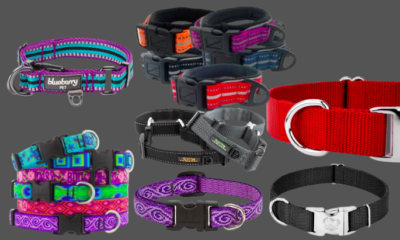
 Pet Care2 years ago
Pet Care2 years agoThe Best Dog Collars For 2022
-
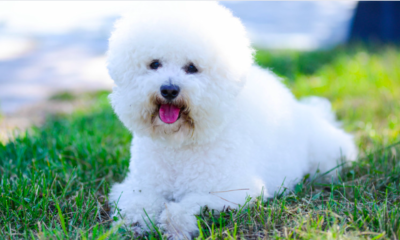
 Dogs2 years ago
Dogs2 years agoBichon Frise: The Happy, Playful, and Cuddly Companion
-
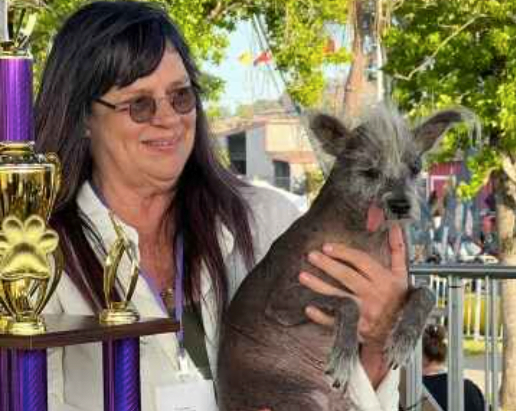
 Trending Pet Stories1 year ago
Trending Pet Stories1 year ago2023 ‘World’s Ugliest Dog’ Winner: Scooter’s Tale of Resilience
-
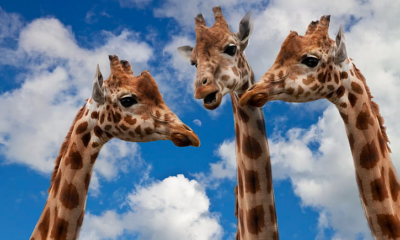
 Animals3 years ago
Animals3 years agoAre There Animals Having Down Syndrome?
-
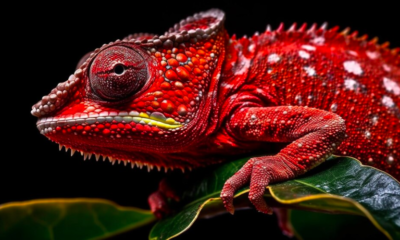
 Pets2 years ago
Pets2 years agoThe Fascinating World Of The Red Chameleon
-
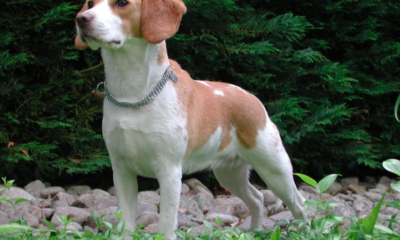
 Dogs3 years ago
Dogs3 years agoTop 10 Most Popular Dog Breeds According To AKC.
-
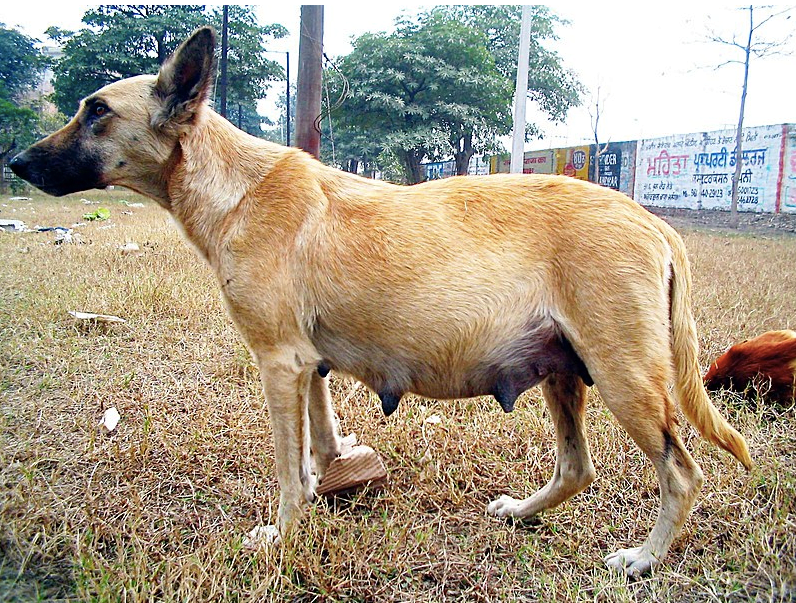
 Dogs2 years ago
Dogs2 years agoDogs 5 Weeks Pregnant: A Comprehensive Guide To Canine Pregnancy
-
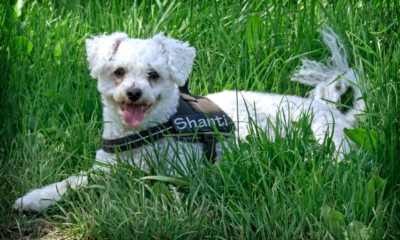
 Dogs3 years ago
Dogs3 years ago21 Dog Breeds That Resemble Bears Or Teddy Bears!
